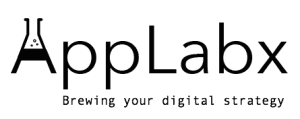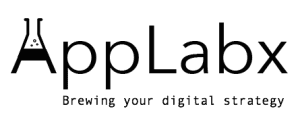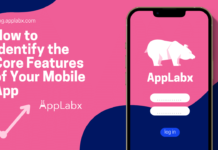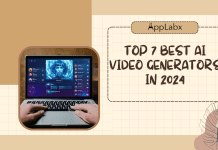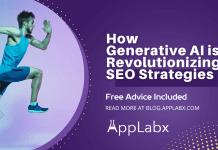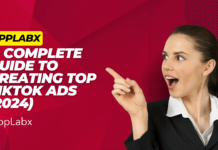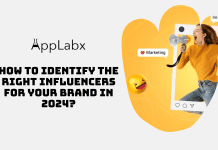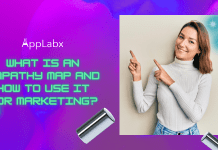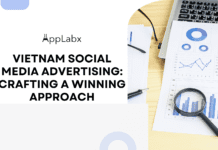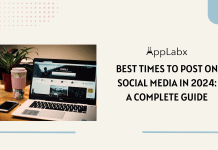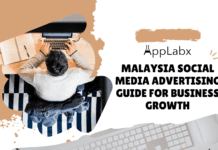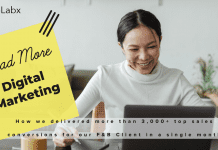Key Takeaways
- Define clear goals, KPIs, and choose an agency with proven expertise in your industry and target platforms.
- Avoid agencies with vague pricing, unrealistic promises, or one-size-fits-all strategies.
- Foster strong collaboration through transparent communication, regular reporting, and flexible strategies.
In 2025, social media continues to dominate as one of the most powerful channels for businesses to connect with customers, build brand loyalty, and drive measurable growth. With over 5 billion active users across platforms like Facebook, Instagram, TikTok, LinkedIn, YouTube, and emerging networks, social media is no longer just a tool for brand visibility — it is a critical driver of revenue, customer engagement, and long-term brand success.

The social media landscape, however, has evolved significantly. What worked even two years ago is now outdated. The rise of AI-driven content creation, hyper-personalized advertising, influencer-led marketing, and integrated social commerce has transformed how businesses engage with audiences. Whether it’s selling directly through Instagram Shops, leveraging viral trends on TikTok, or running sophisticated lead-generation campaigns on LinkedIn, businesses must adapt quickly to stay competitive.
Yet, managing effective social media campaigns in 2025 is more complex than ever. Algorithms change frequently. Consumer behaviors shift rapidly. Creative demands have skyrocketed with the dominance of short-form video, interactive content, and storytelling. For most businesses — whether startups, SMEs, or enterprises — the internal resources to manage social media in-house are often limited in expertise, time, or capacity.
This is where hiring the right social media marketing agency becomes invaluable. A qualified agency brings not just technical know-how but also creative excellence, data-driven insights, and platform expertise that can dramatically accelerate growth. However, with thousands of agencies worldwide offering varying levels of service, pricing, and specialization, choosing the right one can feel overwhelming.
Many business owners face common questions like:
- How do I know if this agency fits my business goals?
- Are they experts in the platforms my audience uses?
- Can they deliver real ROI, not just vanity metrics like likes and followers?
- How transparent are their processes, contracts, and reporting methods?
Making the wrong choice can lead to wasted budgets, missed growth opportunities, and a tarnished brand presence. On the other hand, the right social media marketing agency can become a long-term growth partner that not only manages content but also aligns strategy with your business objectives, delivers consistent results, and evolves with trends.
This comprehensive guide aims to help businesses navigate the complex decision-making process of selecting the best agency in 2025. You’ll learn:
- The latest social media trends influencing agency strategies
- What services modern agencies offer (and which you really need)
- Key factors to evaluate, including pricing models, portfolio analysis, communication styles, and red flags to avoid
- The right questions to ask during consultations
- How to align an agency’s offerings with your marketing goals and budget
Whether you are a local business looking to expand reach, an eCommerce brand aiming to boost sales, a startup seeking lead generation, or an enterprise needing sophisticated multi-platform management, this guide provides you with the practical insights to make an informed choice.
By the end of this guide, you’ll be fully equipped with the knowledge and confidence to select a social media marketing agency that fits your needs in 2025 — helping you drive real engagement, meaningful growth, and a strong return on investment.
But, before we venture further, we like to share who we are and what we do.
About AppLabx
From developing a solid marketing plan to creating compelling content, optimizing for search engines, leveraging social media, and utilizing paid advertising, AppLabx offers a comprehensive suite of digital marketing services designed to drive growth and profitability for your business.
AppLabx is well known for helping companies and startups create social media plans.
At AppLabx, we understand that no two businesses are alike. That’s why we take a personalized approach to every project, working closely with our clients to understand their unique needs and goals, and developing customized strategies to help them achieve success.
If you need a digital consultation, then send in an inquiry here.
How to Choose the Right Social Media Marketing Agency in 2025
- Understanding Social Media Marketing in 2025
- Key Factors to Consider When Choosing a Social Media Marketing Agency
- Questions to Ask Before Hiring a Social Media Marketing Agency
- Red Flags to Avoid When Choosing an Agency
- Cost of Hiring a Social Media Marketing Agency in 2025
- Best Practices to Work Effectively With Your Chosen Agency
1. Understanding Social Media Marketing in 2025
Social media marketing in 2025 has evolved into a sophisticated blend of AI-driven strategies, hyper-personalization, platform diversification, and commerce integration. Brands can no longer rely solely on traditional content posting; they must embrace a multi-dimensional approach that blends creativity, data, and technology.
The Evolution of Social Media Marketing in 2025
AI-Driven Marketing Dominance
- AI automates content creation, scheduling, and audience targeting.
- Tools like ChatGPT, Jasper, and Canva AI generate captions, graphics, and videos.
- Predictive analytics help forecast engagement, conversions, and trends.
Short-Form Video Continues to Dominate
- Platforms prioritize video formats like TikTok, Instagram Reels, YouTube Shorts, and Facebook Reels.
- Brands create snackable content to boost retention and shareability.
- Example: Brands like Nike and Gymshark use 30-second videos to highlight products and customer stories.
Social Commerce is Mainstream
- Direct shopping through Instagram Shops, TikTok Shop, Facebook Marketplace, and Pinterest Shopping.
- Integrated payment systems reduce purchase friction within apps.
- Example: A clothing brand uses TikTok Shop to generate sales directly from viral videos.
Rise of Influencer and Creator-Led Marketing
- Micro and nano influencers deliver higher engagement than mega influencers.
- Authenticity outweighs celebrity status.
- Brands collaborate with creators for product launches, tutorials, and reviews.
Hyper-Personalization and Community Building
- Algorithms reward brands that foster active communities.
- Interactive tools like polls, quizzes, live streams, AMAs (Ask Me Anything) boost engagement.
- Example: Sephora uses Instagram Live tutorials to engage customers in real time.
Key Social Media Platforms in 2025
| Platform | Focus Area | Audience Type | Best For |
|---|---|---|---|
| TikTok | Short-form video, eCommerce | Gen Z, Millennials | Viral content, product showcases, brand trends |
| Visual content, Reels, Shopping | Millennials, Gen Z | Lifestyle branding, influencer marketing | |
| Community groups, paid ads | 30-55 demographic | Local marketing, community building | |
| Professional networking | B2B, Entrepreneurs | Thought leadership, lead generation | |
| YouTube | Long & short-form video | All demographics | Tutorials, storytelling, in-depth reviews |
| Visual discovery, eCommerce | Women, DIY, creators | Shopping inspiration, niche audiences | |
| X (Twitter) | Real-time updates, discussions | Professionals, news | Brand voice, customer service, PR |
| Threads | Text-first community engagement | Gen Z, Creatives | Conversational marketing, brand culture |
Core Benefits of Social Media Marketing in 2025
Brand Visibility and Awareness
- Reach billions globally through platform algorithms.
- Showcase brand values and stories to target demographics.
Direct Sales via Social Commerce
- Seamless in-app purchases increase conversions.
- Example: Beauty brands like Fenty Beauty leverage Instagram Checkout for direct sales.
Lead Generation and Funnel Building
- LinkedIn lead gen forms drive B2B customer acquisition.
- TikTok ads funnel viewers into landing pages with exclusive offers.
Customer Relationship Management (CRM)
- Brands build loyal communities via Facebook Groups, Discord servers, and LinkedIn communities.
- Personalized DMs, comments, and interactive stories improve customer loyalty.
Data-Driven Decision Making
- AI-powered tools provide deep insights into audience behavior.
- Marketers optimize campaigns in real-time based on performance metrics.
Top Trends Shaping Social Media in 2025
| Trend | Description | Business Impact |
|---|---|---|
| AI in Content Creation | Automated graphics, captions, videos | Reduces production time, increases scale |
| Creator Economy Expansion | Direct brand-creator collaborations | Drives authenticity, niche engagement |
| Social Commerce Integration | In-app storefronts and checkouts | Boosts conversions, reduces friction |
| AR/VR Experiences | Virtual try-ons, 3D product showcases | Enhances customer experience |
| Zero-Click Content | Content delivers value without requiring clicks | Increases engagement on-platform |
| Sustainability Messaging | Consumers prefer eco-conscious brands | Builds trust, loyalty |
| Privacy-First Marketing | Post-cookie data management with first-party data | Requires transparent data practices |
Content Formats Dominating in 2025
| Format | Platform Priority | Engagement Level |
|---|---|---|
| Short-Form Video | TikTok, Instagram, YouTube | Very High |
| Stories | Instagram, Facebook | High |
| Live Streams | TikTok, Instagram, YouTube | High |
| Interactive Polls | Instagram, LinkedIn, Threads | Medium to High |
| Carousel Posts | Instagram, LinkedIn | Medium |
| Long-Form Video | YouTube | High (for tutorials) |
| Infographics | Pinterest, LinkedIn | Medium |
| Podcast Snippets | YouTube Shorts, Instagram | Growing |
Matrix: Choosing Content by Objective in 2025
| Objective | Best Content Type | Best Platform |
|---|---|---|
| Brand Awareness | Viral Short-Form Video | TikTok, Instagram Reels |
| Lead Generation | Informative Carousel Posts | LinkedIn, Instagram |
| Direct Sales | Product Demos, Shoppable Videos | TikTok Shop, Instagram Shop |
| Customer Engagement | Live Streams, Polls | Instagram, Facebook |
| Thought Leadership | Long-Form Video, LinkedIn Posts | YouTube, LinkedIn |
| Community Building | Group Discussions, Threads | Facebook Groups, Threads |
Examples of Successful Social Media Campaigns in 2025
- Nike: TikTok fitness challenges that led to 20% growth in engagement.
- Sephora: Instagram Live beauty tutorials driving direct product sales.
- HubSpot: LinkedIn thought leadership carousel posts generating 5x leads in Q1.
- IKEA: Pinterest visual boards showcasing eco-friendly furniture lines linked to Pinterest Shopping.
- L’Oréal: Augmented reality (AR) filters for virtual makeup try-ons driving Instagram engagement.
Conclusion of the Section
Social media marketing in 2025 is a fusion of creativity, commerce, community, and cutting-edge technology. Brands must understand not only where their audiences are but also how to craft meaningful, engaging, and data-driven strategies that drive results across multiple touchpoints.
2. Key Factors to Consider When Choosing a Social Media Marketing Agency
Selecting the right social media marketing agency is a critical decision that can directly impact your brand’s visibility, growth, and revenue. With thousands of agencies available globally, each offering different services, pricing, and expertise, it’s essential to evaluate them using a structured approach. Below is a comprehensive guide covering the key factors you must consider when choosing a social media marketing agency in 2025.
1. Define Your Business Goals and Objectives
Understand What You Want to Achieve
- Brand awareness and visibility
- Lead generation and customer acquisition
- Community growth and engagement
- Product sales and direct revenue
- Reputation management and thought leadership
Goal Alignment Example
- A SaaS company may focus on LinkedIn lead generation, while an eCommerce brand may prioritize Instagram Shops for direct sales.
| Business Type | Primary Goal | Suggested Platform |
|---|---|---|
| SaaS | Lead Generation | |
| eCommerce | Product Sales | Instagram, TikTok |
| Local Businesses | Community Building | Facebook, Instagram |
| Creative Agencies | Brand Visibility | Instagram, Threads |
| B2B Enterprises | Thought Leadership | LinkedIn, YouTube |
2. Evaluate Industry Experience and Niche Expertise
Why Industry Experience Matters
- Agencies with niche expertise understand audience behavior, competitor dynamics, and content formats that work.
Check for:
- Proven track record in your industry
- Understanding of compliance (for industries like finance or healthcare)
- Experience with similar-sized businesses
Example
- A fashion brand should hire an agency with a strong portfolio in TikTok and Instagram influencer marketing, not one primarily focused on B2B.
| Niche | Platform Focus | Content Strategy |
|---|---|---|
| Fashion & Beauty | Instagram, TikTok | Influencers, AR try-ons |
| Finance & Insurance | LinkedIn, YouTube | Educational, trust-building |
| Tech & SaaS | LinkedIn, Twitter, YouTube | Webinars, thought leadership |
| Food & Beverage | Instagram, Pinterest | Recipes, lifestyle imagery |
| Real Estate | Facebook, Instagram, YouTube | Virtual tours, testimonials |
3. Review Portfolio, Case Studies, and Success Metrics
What to Look For
- Campaign examples with measurable results
- Case studies showcasing growth in followers, engagement, sales, or leads
- Visual quality and creativity of past content
Red Flags
- Lack of documented results
- Generic templates with no customized strategies
Example
- An agency shows a case study where a client’s TikTok campaign resulted in a 300% increase in website traffic and 20% sales growth.
| Portfolio Checkpoints | What to Verify |
|---|---|
| Visual Design | High-quality graphics and videos |
| Engagement Metrics | Likes, shares, comments, growth |
| ROI Examples | Sales uplift, lead conversions |
| Client Similarity | Worked with businesses like yours |
| Campaign Diversity | Paid ads, organic, influencer-led |
4. Assess Service Offerings and Specializations
Common Services Agencies Offer
- Organic social media management
- Paid social advertising
- Influencer marketing campaigns
- Video and content creation
- Social commerce optimization
- Community management
- Analytics and performance reporting
Example
- A product-based business may need TikTok Shop optimization, while a consultancy requires LinkedIn lead gen ads.
| Service Type | Suitable For | Example Deliverable |
|---|---|---|
| Organic Social Management | Brand building, engagement | Weekly post scheduling |
| Paid Social Advertising | Sales, leads | Facebook/Instagram Ads |
| Influencer Marketing | Awareness, niche authority | Creator campaign collaborations |
| Video Content Creation | Brand storytelling | TikTok/YouTube videos |
| Community Management | Customer loyalty | FB Group moderation |
5. Review Strategic Approach and Methodology
Key Strategy Indicators
- Custom-tailored strategies, not one-size-fits-all
- Audience research and persona development
- Competitive analysis
- Clear KPIs and performance indicators
- Integration of AI tools for efficiency
Example
- A top agency might start with an audience analysis using AI-powered tools, create a content calendar with data-driven posting schedules, and use A/B testing for paid ads.
| Strategic Component | What to Expect |
|---|---|
| Audience Research | Data-driven personas |
| Content Strategy | Aligns with brand tone and goals |
| Platform Selection | Based on audience behavior |
| Testing & Optimization | Regular A/B testing on creatives |
| Reporting & Feedback | Monthly/weekly performance updates |
6. Pricing Transparency and Contract Flexibility
Pricing Models
- Monthly retainers
- Project-based fees
- Hourly rates
- Performance-based contracts
Factors Affecting Cost
- Platform complexity (TikTok vs. LinkedIn)
- Content volume (e.g., video-heavy strategies)
- Ad budget management
- Number of platforms
Example Pricing Matrix
| Service Type | Average Monthly Cost (USD) |
|---|---|
| Organic Management | $1,000 – $5,000 |
| Paid Ad Campaigns | $1,500 – $7,500 |
| Influencer Management | $2,000 – $10,000+ |
| Video Production | $1,000 – $5,000 per video |
| Full-Service Package | $3,000 – $15,000+ |
Contract Best Practices
- Clear deliverables outlined
- Exit clauses and cancellation policies
- No hidden fees
7. Verify Client Reviews, Testimonials, and Reputation
Where to Check
- Google Reviews
- Clutch.co
- Trustpilot
- LinkedIn Recommendations
What to Look For
- Recurring positive feedback
- Testimonials related to your industry
- Agencies with long-term client relationships
Example
- A top-rated agency on Clutch with over 50 five-star reviews, highlighting consistent ROI delivery for eCommerce brands.
| Source | Reliability Level | Suggested Use |
|---|---|---|
| Clutch.co | High | In-depth client reviews |
| Google Reviews | Medium-High | Quick reputation check |
| Medium | Personal recommendations | |
| Trustpilot | Medium | Broader feedback |
8. Evaluate Communication Style and Reporting Process
Communication Best Practices
- Dedicated account manager
- Weekly or bi-weekly check-ins
- Fast response times
Reporting Standards
- Monthly performance dashboards
- KPI-driven reporting (engagement, conversions, ROI)
- Transparent insights with recommendations
Example
- Agencies that offer real-time reporting dashboards (e.g., via Google Data Studio) are more trustworthy for ongoing campaign tracking.
| Communication Factor | Importance |
|---|---|
| Account Manager | Single point of contact |
| Reporting Frequency | Weekly/Monthly based on scope |
| Data Transparency | Real-time dashboard access |
| Feedback Loops | Ability to adapt strategy quickly |
Conclusion of the Section
Choosing the right social media marketing agency in 2025 requires a strategic approach that considers your goals, industry expertise, service offerings, pricing transparency, and the agency’s ability to deliver measurable results. By following this structured evaluation framework and leveraging the examples, tables, and matrices provided, businesses can confidently select an agency that aligns with their vision and accelerates growth in the competitive digital landscape.
3. Questions to Ask Before Hiring a Social Media Marketing Agency
Asking the right questions before hiring a social media marketing agency in 2025 is crucial to ensure you partner with an agency that aligns with your business goals, budget, and expectations. The following comprehensive list of questions—along with examples, tables, and evaluation matrices—will help you assess an agency’s capabilities, transparency, and suitability.
1. What Platforms Do You Specialize In?
Why It Matters
- Not all agencies are experts on every platform.
- Some agencies excel at TikTok and Instagram, while others are better suited for LinkedIn or YouTube.
Key Sub-Questions
- Which platforms drive the most success for clients in my industry?
- Are you experienced with emerging platforms like Threads or TikTok Shop?
Example
- An eCommerce brand should prioritize agencies proficient in Instagram, TikTok, and Pinterest Shopping, while a B2B company should look for LinkedIn and YouTube specialists.
| Platform | Ideal For | Agency Expertise Example |
|---|---|---|
| TikTok | Viral growth, product discovery | Short-form video ad campaigns |
| Brand aesthetics, shopping | Influencer collaborations, Reels | |
| B2B leads, professional brand | Thought leadership, lead gen ads | |
| YouTube | Tutorials, long-form content | Video storytelling, SEO optimization |
| Community, local advertising | Group engagement, targeted ads |
2. What Is Your Process for Developing a Social Media Strategy?
Why It Matters
- A strong process indicates thoughtful, data-driven planning.
Look For
- Audience and competitor research
- Goal alignment and KPI setting
- Content planning and creative direction
- Testing, optimization, and reporting workflows
Example
- Top agencies will conduct in-depth customer persona development, followed by trend analysis and competitor benchmarking before launching campaigns.
| Process Step | What to Expect |
|---|---|
| Discovery & Goal Setting | Align goals (awareness, sales, leads) |
| Audience Research | Identify key demographics and interests |
| Competitor Benchmarking | Study top competitors’ strategies |
| Content Strategy | Calendar with themes, formats, trends |
| Testing & Optimization | A/B tests on creatives and formats |
3. Can You Share Recent Case Studies or Success Stories?
Why It Matters
- Proof of results demonstrates reliability and competence.
What to Look For
- Case studies from similar industries
- ROI data, growth metrics, and client testimonials
- Clear before-and-after performance benchmarks
Example
- An agency shares a case where a fitness apparel brand gained 500K TikTok followers in 6 months, leading to 35% revenue growth from TikTok Shop.
| Case Study Element | Verify |
|---|---|
| Objective | What problem was solved? |
| Strategy | Campaign types, platform focus |
| Metrics | Engagement, sales, leads, ROI |
| Timeline | Duration of campaign success |
| Client Feedback | Satisfaction and renewal rates |
4. How Do You Measure Success?
Why It Matters
- Agencies must be focused on metrics that align with your goals—not vanity metrics alone.
Key Metrics to Discuss
- Engagement rates (likes, comments, shares)
- Follower growth vs. community quality
- Conversion rates from social campaigns
- Sales directly attributed to social media (via tracking links)
- Return on Ad Spend (ROAS)
Example
- A lead-generation-focused business should prioritize metrics like Cost Per Lead (CPL) and Lead Quality, not just impressions.
| Objective | Success Metrics |
|---|---|
| Brand Awareness | Reach, impressions, share of voice |
| Lead Generation | CPL, conversion rate, MQLs |
| Direct Sales | ROAS, cost per purchase |
| Community Growth | Engagement rate, retention |
| Thought Leadership | Content shares, comments, saves |
5. What Content Creation Capabilities Do You Offer?
Why It Matters
- Content is the core of social media success.
Verify
- In-house content creators (designers, videographers, copywriters)
- Video production for TikTok, Reels, Shorts, YouTube
- UGC (User-Generated Content) collaborations
- Influencer-driven content creation
Example
- If your goal is TikTok growth, check whether the agency produces vertical, trending video formats optimized for TikTok’s algorithm.
| Content Type | Provided In-House? | Outsourced? | Needed for Platforms |
|---|---|---|---|
| Graphic Design | Yes/No | Yes/No | Instagram, Facebook, LinkedIn |
| Short-Form Video | Yes/No | Yes/No | TikTok, Reels, Shorts |
| Long-Form Video | Yes/No | Yes/No | YouTube, LinkedIn |
| Copywriting & Captions | Yes/No | Yes/No | All Platforms |
| Animation/Motion Graphics | Yes/No | Yes/No | YouTube, Instagram Stories |
6. What Tools and Technologies Do You Use?
Why It Matters
- Modern agencies leverage AI, automation, and analytics tools to optimize campaigns.
Common Tools
- Social scheduling: Later, Sprout Social, Buffer
- Analytics: Google Analytics, Meta Insights, TikTok Analytics
- AI for content: Canva AI, Jasper, ChatGPT
- Influencer platforms: Upfluence, CreatorIQ
- Ad management: Meta Ads Manager, LinkedIn Campaign Manager, TikTok Ads Manager
Example
- An agency that uses Google Data Studio for real-time reporting dashboards offers greater transparency than one with manual PDF reports.
| Function | Tool Examples |
|---|---|
| Scheduling | Later, Hootsuite, Sprout Social |
| Analytics | Google Analytics, Meta Insights |
| AI Content Creation | Jasper, Canva AI, ChatGPT |
| Influencer Management | Upfluence, AspireIQ, CreatorIQ |
| Paid Ads Management | Meta Ads, TikTok Ads, LinkedIn Ads |
| Reporting Dashboards | Google Data Studio, DashThis |
7. What Is Your Pricing Structure and What’s Included?
Why It Matters
- Understand if the pricing covers strategy, content creation, paid ads management, and reporting—or if it’s billed separately.
Common Pricing Models
- Monthly retainer
- Project-based
- Hourly consulting
- Ad spend percentage + management fee
Example
- An agency may charge $3,000/month for organic content plus 15% of ad spend for paid campaigns.
| Service Type | Cost Structure Example |
|---|---|
| Organic Social Management | $1,500–$5,000/month |
| Paid Ads Management | 15% of ad spend or $1,500 minimum |
| Video Content Creation | $500–$2,000 per video |
| Influencer Campaigns | $2,000–$10,000+ per campaign |
| Full-Service Package | $5,000–$20,000/month |
8. How Do You Handle Reporting and Communication?
Verify
- Reporting frequency (weekly, bi-weekly, monthly)
- Dashboard access
- Dedicated account manager or general support line
- Communication channels (Slack, email, Zoom, WhatsApp)
Example
- Look for agencies offering bi-weekly Zoom strategy calls, plus real-time reporting dashboards.
| Communication Type | Frequency | Format |
|---|---|---|
| Strategy Calls | Bi-weekly or monthly | Zoom, Google Meet |
| Reports | Monthly | PDF + Dashboard (Data Studio) |
| Slack/Email Support | Ongoing | Dedicated channel or thread |
| Urgent Queries | 24–48 hrs response | Phone, WhatsApp, Slack |
9. How Do You Stay Current with Social Media Trends and Algorithm Changes?
Look For
- Agency attendance at industry conferences (Social Media Week, HubSpot Inbound, VidCon)
- Subscriptions to tools like Trendwatchers, Exploding Topics
- Ongoing employee training
- Active case studies testing new features (e.g., TikTok Shop, Threads)
Example
- A competitive agency will show how it pivoted client strategies when Instagram shifted algorithm focus to Reels over static posts.
| Trend Monitoring Practice | Expected Response Example |
|---|---|
| Industry Events | Attends Social Media Week annually |
| Trend Tools Usage | Uses Exploding Topics for forecasting |
| In-house Training | Monthly trend workshops |
| Beta Feature Testing | Early adoption of TikTok Shop tools |
Conclusion of the Section
Asking the right questions is essential to vet the expertise, transparency, and capability of a social media marketing agency in 2025. This structured approach—supported by detailed examples, tools, pricing models, and communication standards—ensures that businesses partner with an agency that fits their goals, budget, and expectations. A well-vetted agency not only delivers on KPIs but becomes a true growth partner in the fast-evolving social media landscape.
4. Red Flags to Avoid When Choosing an Agency
Identifying the wrong agency early can save your business thousands of dollars, months of wasted effort, and potential damage to your brand reputation. Not all agencies operate with transparency, expertise, or your best interests in mind. Spotting key warning signs is essential for avoiding unreliable partners. This comprehensive guide highlights the critical red flags to watch out for when hiring a social media marketing agency in 2025.
1. Overpromising Unrealistic Results
Warning Signs
- Guarantees of #1 rankings, viral content, or instant follower growth within days or weeks.
- Claims of overnight success with no proven track record.
- Promises that ignore platform algorithm unpredictability.
Example
- An agency guarantees that your TikTok video will go viral in one week, which is unrealistic given TikTok’s algorithm complexity and content dynamics.
| Claim Type | Red Flag Level | Why It’s Problematic |
|---|---|---|
| “Guaranteed viral” | High | Algorithms are unpredictable |
| “10K followers in 1 week” | Very High | Likely uses fake followers or bots |
| “Immediate ROI” | Medium | ROI takes time depending on goals |
2. Lack of Transparency in Pricing and Deliverables
Warning Signs
- Vague or unclear pricing structures.
- Hidden fees revealed after signing the contract.
- No detailed breakdown of what services are included.
Example
- An agency quotes $2,000/month but fails to mention that content creation and ad management are billed separately, leading to unexpected costs.
| Transparency Factor | Red Flag Indicator | Preferred Standard |
|---|---|---|
| Pricing Clarity | Vague or fluctuates frequently | Flat-rate with clear breakdown |
| Contract Terms | Missing deliverables, unclear scope | Defined services & cancellation terms |
| Billing Practices | Surprise fees or upsells | All fees outlined upfront |
3. No Proven Track Record or Relevant Case Studies
Warning Signs
- Cannot provide case studies, client testimonials, or portfolio examples.
- Only showcases generic mock-ups without real data.
- Refuses to connect you with past clients for references.
Example
- An agency that claims expertise in LinkedIn B2B marketing but has zero case studies or data to back that up.
| Validation Type | Red Flag Level | Preferred Verification |
|---|---|---|
| Case Studies | High | Real campaign results and metrics |
| Client References | Medium | Willing to provide contact references |
| Portfolio Quality | High | Demonstrates past content, creatives |
4. One-Size-Fits-All Strategies
Warning Signs
- Offers the same package to every client, regardless of industry or goals.
- No audience research or competitor analysis is conducted.
- Provides templated content calendars without customization.
Example
- A local dental clinic receives the same TikTok dance trend strategy meant for a fashion eCommerce store.
| Customization Factor | Red Flag Indicator | Best Practice Expectation |
|---|---|---|
| Audience Research | None or generic | In-depth persona and platform analysis |
| Strategy Approach | One-size-fits-all | Tailored to business goals and market |
| Content Direction | Generic templates | Customized to brand voice and tone |
5. Poor Communication and Slow Response Times
Warning Signs
- Delayed replies to emails and messages.
- Lack of regular check-ins or meetings.
- No dedicated account manager assigned.
Example
- An agency that takes over 5 days to respond to urgent requests about a paid campaign error.
| Communication Aspect | Red Flag Level | Ideal Agency Standard |
|---|---|---|
| Response Time | High | <24-48 hours for non-urgent matters |
| Point of Contact | Medium | Dedicated account manager assigned |
| Meeting Frequency | High | Weekly or bi-weekly check-ins |
6. No Clear Reporting or KPIs
Warning Signs
- Provides no reporting dashboards, only verbal updates.
- Focuses solely on vanity metrics like followers or likes, ignoring sales or conversions.
- Reports are infrequent or vague.
Example
- The agency sends a basic report stating ‘We grew followers’ but provides no data on click-through rates, conversions, or ROI.
| Reporting Factor | Red Flag Indicator | Best Practice Standard |
|---|---|---|
| KPI Definition | Undefined or irrelevant | Tied to business goals (e.g., leads, ROI) |
| Report Frequency | Sporadic or missing | Weekly/Monthly with dashboards |
| Data Transparency | Hides performance details | Full metrics with analysis |
7. Heavy Dependence on Fake Followers or Engagement Bots
Warning Signs
- Promises follower count growth via ‘growth hacks’ with no mention of targeting real audiences.
- Uses engagement pods, bots, or fake likes to inflate metrics.
Example
- An agency delivers 5,000 Instagram followers overnight, but engagement remains near zero, indicating fake or irrelevant followers.
| Growth Method | Risk Level | Legitimate Alternative |
|---|---|---|
| Buying Followers | Very High | Organic growth via content & ads |
| Bot Comments/Likes | Very High | Community building, real interactions |
| Engagement Pods | High | Authentic influencer partnerships |
8. Overly Aggressive Lock-In Contracts
Warning Signs
- Requires 6-12 month minimum contracts with no trial period or flexibility.
- High penalties for early termination.
- No satisfaction guarantees or performance review clauses.
Example
- An agency locks a business into a 12-month contract, even if performance is poor after 2 months.
| Contract Factor | Red Flag Indicator | Best Practice Standard |
|---|---|---|
| Contract Length | >6 months mandatory | Month-to-month or quarterly terms |
| Exit Clauses | No opt-out or penalties | Clear, fair termination policies |
| Flexibility | None | Option to pause, revise, or exit |
9. Lack of Adaptability to Algorithm and Trend Changes
Warning Signs
- Uses outdated strategies like static image-first posting on Instagram instead of prioritizing Reels.
- Fails to adopt features like TikTok Shop, Threads, or Instagram Broadcast Channels.
Example
- Agency continues to push Facebook organic post strategies despite declining organic reach, ignoring video and paid amplification trends.
| Trend Adaptability | Red Flag Signal | Future-Proof Approach |
|---|---|---|
| Algorithm Updates | Ignores platform changes | Regular strategy optimization |
| New Feature Adoption | Resists trying new tools | Early adoption (e.g., TikTok Shop) |
| Content Format Shift | Focused on outdated formats | Prioritizes video, interactive content |
10. No Focus on ROI or Business Outcomes
Warning Signs
- Focused only on likes, followers, and reach—not on conversions, leads, or revenue.
- Cannot articulate how social efforts contribute to bottom-line results.
Example
- The agency runs Facebook ads focused on engagement, while your goal is eCommerce sales with a specific ROAS target.
| Outcome Focus | Red Flag Indicator | Business-Centric Standard |
|---|---|---|
| Metrics | Likes, followers only | Sales, leads, ROAS, LTV |
| Campaign Objectives | Not aligned to business goals | Custom goals per client |
| Attribution | Not tracked | Tracks clicks, conversions, ROI |
Red Flags Checklist Matrix
| Red Flag Category | Severity Level | Deal Breaker | Needs Clarification | Acceptable with Fix |
|---|---|---|---|---|
| Unrealistic Promises | High | Yes | No | No |
| Hidden Fees | High | Yes | No | No |
| No Case Studies | Medium | Sometimes | Yes | Yes |
| One-Size-Fits-All Approach | High | Yes | No | No |
| Poor Communication | High | Yes | Sometimes | No |
| No Reporting | High | Yes | No | No |
| Fake Followers/Engagement | Very High | Yes | No | No |
| Long Lock-In Contracts | Medium-High | Sometimes | Yes | Yes |
| Refuses to Adapt to Trends | High | Yes | No | No |
| No Focus on ROI | Very High | Yes | No | No |
Conclusion of the Section
Avoiding these red flags is crucial for ensuring that you partner with a trustworthy, competent, and results-driven social media marketing agency in 2025. Agencies that lack transparency, rely on outdated strategies, or focus on vanity metrics will not drive meaningful growth. By using the provided checklists, examples, and evaluation matrices, businesses can confidently eliminate poor-fit agencies and focus on selecting partners that align with their long-term growth goals and ROI expectations.
5. Cost of Hiring a Social Media Marketing Agency in 2025
Understanding the cost of hiring a social media marketing agency in 2025 is essential for businesses of all sizes to plan their marketing budgets effectively. Agency pricing models vary widely based on services, experience, industry, geographic location, and campaign complexity. This detailed guide breaks down the various cost structures, what influences pricing, and what businesses should expect when hiring a social media marketing agency in 2025.
1. Key Pricing Models Used by Social Media Marketing Agencies
Common Pricing Structures
- Monthly Retainer
- Fixed monthly fee for ongoing services like content creation, management, and reporting.
- Most common for comprehensive campaigns.
- Project-Based Pricing
- Fixed price for a specific project (e.g., influencer campaign, video production, platform setup).
- Hourly Consulting Rates
- Payment based on hourly consultation, typically for strategy sessions, audits, or training.
- Ad Spend Percentage Model
- Agencies charge a percentage of the ad spend (common for paid media management), typically 10%–20% of ad budget.
- Performance-Based Pricing
- Pricing tied to specific results such as sales, leads, or conversions.
| Pricing Model | Average Range (USD) | Best For |
|---|---|---|
| Monthly Retainer | $1,500 – $20,000+ | Ongoing content & ad management |
| Project-Based | $2,000 – $30,000+ | Campaign launches, influencer programs |
| Hourly Consulting | $100 – $500/hour | Strategy audits, workshops |
| Ad Spend Percentage | 10% – 20% of total ad spend | Paid ad campaign management |
| Performance-Based | Negotiated per lead/sale | Sales-driven, eCommerce, lead gen |
2. Factors That Influence the Cost of a Social Media Marketing Agency
Platform Complexity
- Single Platform Management costs less than multi-platform campaigns.
- Platforms like TikTok and YouTube typically cost more due to higher video production needs.
Content Volume & Quality
- More frequent posting, advanced video editing, and professional photography raise costs.
- Example: A brand requesting 15 TikTok videos per month will pay significantly more than a business requesting 5 Instagram graphics.
Type of Services
- Organic social management vs. paid ad campaigns vs. influencer marketing.
- Packages including all three are priced at a premium.
Geographic Location
- Agencies based in New York, London, Sydney typically charge more than those in Southeast Asia, Eastern Europe, or India.
Industry Expertise
- Agencies specializing in regulated industries like finance or healthcare often charge more due to compliance requirements.
| Cost Driver | Low Cost Scenario | High Cost Scenario |
|---|---|---|
| Platforms Managed | 1 platform (Instagram) | Multi-platform (TikTok, YouTube, LinkedIn) |
| Content Type | Static posts only | Video-heavy content, AR filters |
| Service Scope | Organic only | Organic + Paid + Influencer + Community |
| Location | Eastern Europe, India, Southeast Asia | USA, UK, Australia |
| Industry | Retail, food | Finance, legal, healthcare |
3. Average Costs by Service Type in 2025
| Service Type | Average Monthly Cost (USD) |
|---|---|
| Organic Social Media Management | $1,500 – $7,500 |
| Paid Ads Management | $1,500 – $10,000+ |
| Influencer Marketing Management | $2,000 – $15,000+ |
| Social Commerce Setup (TikTok Shop, IG Shop) | $3,000 – $10,000+ |
| Video Production (Short-Form) | $500 – $2,500 per video |
| Video Production (Long-Form) | $2,500 – $10,000+ |
| Consulting & Strategy | $100 – $500 per hour |
| Full-Service Comprehensive Package | $5,000 – $25,000+ |
4. Cost Breakdown by Business Size
| Business Size | Average Monthly Cost | Typical Service Scope |
|---|---|---|
| Small Business/Startup | $1,500 – $5,000 | 1–2 platforms, basic content, light ad spend |
| Medium Business | $5,000 – $12,000 | Multi-platform, paid ads, community management |
| Large Enterprise | $12,000 – $25,000+ | Full-service: organic, paid, influencer, video |
| Global Enterprise | $25,000 – $50,000+ | Complex campaigns, multi-language, global reach |
5. Comparison Matrix: DIY vs. Hiring an Agency vs. In-House Team
| Aspect | DIY | Hire Agency | In-House Team |
|---|---|---|---|
| Cost | $500 – $2,000 | $3,000 – $25,000+ | $8,000 – $30,000/month (salaries & tools) |
| Expertise | Low | High (diverse specialists) | Medium – needs recruitment & training |
| Scalability | Low | High – flexible contracts | Medium – limited by team capacity |
| Content Quality | Basic | Professional – video, design, strategy | Varies based on hires |
| Tool Costs | $200 – $500/month | Included in agency fee | Separate – $500 – $2,000/month |
| Flexibility | High | Medium to high (contract-based) | Low – Fixed employee contracts |
6. Examples of Realistic Social Media Campaign Budgets in 2025
| Campaign Type | Platforms | Deliverables | Estimated Cost (USD) |
|---|---|---|---|
| Local Brand Awareness | Facebook, Instagram | 8 posts/month + ads + reporting | $3,000 – $6,000/month |
| TikTok Growth Campaign | TikTok | 10 videos + TikTok Shop setup + ads | $8,000 – $15,000/month |
| LinkedIn B2B Lead Gen | 4 carousels + ads + outreach strategy | $5,000 – $10,000/month | |
| Influencer Product Launch | Instagram, TikTok | 5 influencers + UGC + paid amplification | $10,000 – $20,000+ |
| Full-Service eCommerce | IG, TikTok, Pinterest | Content + ads + influencer + community | $15,000 – $30,000/month |
7. Hidden Costs to Be Aware Of
Common Additional Charges
- Ad Spend — Not included in management fees.
- Platform Setup Fees — For TikTok Shop, Meta Commerce, etc.
- Video Production — Charged per shoot, not always included.
- Stock Images/Videos Licensing
- Influencer Payments — Separate from agency fees.
- Tool Subscriptions — Premium scheduling, reporting, or analytics tools.
| Hidden Cost | Typical Range (USD) |
|---|---|
| Ad Spend | $500 – $100,000+/month |
| Video Shoots | $500 – $5,000+ per shoot |
| Influencer Fees | $500 – $20,000 per creator |
| Platform Setup | $1,000 – $5,000 |
| Stock Media Licensing | $50 – $500/month |
8. How to Maximize ROI When Hiring an Agency
Best Practices
- Clearly define KPIs such as ROAS, lead volume, customer acquisition cost (CAC).
- Start with a trial project or 3-month contract before committing long-term.
- Combine organic + paid + influencer strategies for better results.
- Ensure the agency offers transparent reporting on both spend and outcomes.
- Regularly review campaign performance and iterate.
| Tactic | Impact |
|---|---|
| Set Clear KPIs | Aligns agency work to outcomes |
| Test Before Scaling | Reduces risk |
| Multi-Channel Approach | Improves reach and conversions |
| Regular Reporting | Identifies what’s working |
| Performance Reviews | Keeps agency accountable |
Conclusion of the Section
The cost of hiring a social media marketing agency in 2025 varies widely depending on service scope, business size, content demands, and platform complexity. Whether you are a startup looking for simple management or an enterprise seeking full-scale campaigns across TikTok, Instagram, YouTube, and LinkedIn, understanding pricing structures and cost influencers helps you budget effectively. By using the matrices, examples, and charts provided, businesses can make informed decisions to select an agency that delivers a strong return on investment while avoiding hidden fees and unrealistic expectations.
6. Best Practices to Work Effectively With Your Chosen Agency
Partnering with a social media marketing agency is not a hands-off process. To achieve maximum ROI, businesses must foster strong collaboration, maintain clear communication, and establish shared expectations. This comprehensive guide covers the best practices to ensure a highly productive and successful relationship with your chosen agency in 2025.
1. Set Clear Goals and Expectations From the Start
Why It Matters
- Misaligned expectations lead to underperformance and dissatisfaction.
- Defining goals ensures both parties work toward measurable outcomes.
Key Actions
- Define primary goals: brand awareness, lead generation, conversions, or community growth.
- Agree on KPIs: ROAS, engagement rate, follower growth, CAC, or lead volume.
- Document deliverables, timelines, and review checkpoints.
Example
- A B2B brand may prioritize LinkedIn leads at $50 CPL, while an eCommerce brand focuses on 3x ROAS on Instagram ads.
| Goal Type | Example KPI | Platform Example |
|---|---|---|
| Brand Awareness | Reach, impressions | TikTok, Instagram |
| Lead Generation | Cost per lead (CPL) | LinkedIn, Facebook |
| Direct Sales | ROAS, cost per purchase | Instagram, TikTok |
| Community Engagement | Engagement rate | Facebook, Threads |
2. Establish Transparent Communication Channels
Why It Matters
- Smooth communication accelerates campaign success.
- Reduces misunderstandings and missed deadlines.
Communication Methods
- Weekly or bi-weekly video meetings via Zoom, Google Meet, or Teams.
- Daily updates through Slack, WhatsApp, or email threads.
- Use project management tools like Asana, Trello, or Monday.com.
| Communication Type | Frequency | Tool Example |
|---|---|---|
| Project Updates | Weekly | Slack, Trello, Asana |
| Strategy Sessions | Bi-weekly or monthly | Zoom, Google Meet |
| Reporting Reviews | Monthly | Google Data Studio Dashboards |
| Quick Queries | As needed | WhatsApp, Email |
3. Share Brand Assets and Guidelines Early
Why It Matters
- Ensures brand consistency across all platforms.
- Speeds up content production and avoids revisions.
Assets to Provide
- Brand style guide: fonts, colors, tone of voice.
- Logo files in multiple formats.
- Product images, lifestyle photos, and videos.
- Previous campaign data or creative assets.
- Access to brand accounts (Instagram, TikTok, LinkedIn, Ads Managers).
| Asset Type | Format Needed | Notes |
|---|---|---|
| Brand Logo | .AI, .PNG, .SVG | Transparent background |
| Brand Guidelines | PDF or editable file | Include tone of voice |
| Product Images | High-resolution JPG/PNG | Studio + lifestyle shots |
| Social Media Accounts | Admin-level access | Provide securely via LastPass |
| Previous Campaign Data | Excel, CSV, or reports | Aids targeting and strategy |
4. Foster a Collaborative Workflow
Collaboration Best Practices
- Approve content calendars proactively.
- Share upcoming events, product launches, or promotions early.
- Participate in brainstorming sessions for content ideas.
- Encourage two-way feedback: provide constructive input and listen to agency recommendations.
Example
- A fashion brand collaborating with the agency on TikTok trend-based content weekly improves engagement by 40%.
| Collaboration Element | Client Role | Agency Role |
|---|---|---|
| Content Planning | Share key dates & feedback | Draft and refine content calendar |
| Creative Ideas | Approve or contribute concepts | Suggest trends, creative formats |
| Paid Campaigns | Approve budget & goals | Optimize targeting, creative, ROAS |
| Crisis Management | Notify of issues quickly | Respond with messaging adjustments |
5. Leverage Real-Time Reporting and Analytics
Why It Matters
- Enables data-driven decisions.
- Provides transparency into campaign performance.
Reporting Tools Agencies May Use
- Google Data Studio – Custom dashboards.
- Sprout Social – Engagement and audience insights.
- Meta Business Suite – Facebook & Instagram analytics.
- TikTok Ads Manager – Real-time ad metrics.
| Report Component | Key Metrics | Example Tool |
|---|---|---|
| Paid Ads Performance | ROAS, CTR, CPM, CPC | Meta Ads, TikTok Ads Manager |
| Organic Growth | Follower growth, engagement rate | Sprout Social, Later Analytics |
| Lead Generation | CPL, MQLs, conversion rate | LinkedIn Campaign Manager |
| E-Commerce Sales | Purchases, conversion rate | Google Analytics, Shopify Reports |
6. Maintain Flexibility to Pivot When Needed
Why It Matters
- Social media algorithms, trends, and user behavior change rapidly.
- The ability to pivot leads to better long-term performance.
Pivot Scenarios
- Algorithm changes (e.g., Instagram favoring Reels).
- Ad platform updates (e.g., privacy changes impacting targeting).
- Performance shifts (e.g., TikTok outperforming Instagram for a product).
| Scenario | Trigger | Pivot Action |
|---|---|---|
| Algorithm Update | Instagram boosts Reels reach | Increase video content production |
| Low ROAS on Facebook | Ad fatigue or poor audience | Shift budget to TikTok or YouTube Ads |
| Trend Emergence | Viral challenge starts | Create timely trend-based content |
| Seasonal Campaign | Holidays or product launch | Adjust offers, creatives, and timing |
7. Define Roles, Responsibilities, and Boundaries Clearly
Client vs. Agency Responsibilities
| Area of Work | Client Responsibility | Agency Responsibility |
|---|---|---|
| Brand Guidelines | Provide | Follow |
| Content Creation | Approve, provide assets if needed | Conceptualize, produce, schedule |
| Paid Ads | Approve budget | Manage ads, optimize creatives, report |
| Community Management | Optional (some clients handle this) | Respond to DMs, comments, customer queries |
| Reporting & Insights | Review, request insights | Generate, analyze, and explain reports |
8. Set Up Regular Performance Review Meetings
Meeting Frequency
- Monthly or bi-monthly strategy reviews.
- Quarterly reviews for long-term goal assessment.
Agenda Example
- Review KPIs against goals.
- Discuss wins, challenges, and missed targets.
- Adjust strategies for the next month/quarter.
- Share insights on upcoming trends or feature rollouts.
| Review Meeting Item | Purpose |
|---|---|
| KPI Review | Assess performance |
| Strategy Refinement | Adjust tactics based on data |
| Budget Allocation | Discuss scaling or reducing spend |
| New Opportunities | Explore trends, features, platforms |
9. Foster a Relationship of Trust and Mutual Respect
Why It Matters
- Agencies perform better when treated as strategic partners, not vendors.
Best Practices
- Avoid micromanaging creative processes.
- Respect the agency’s expertise in platform nuances.
- Offer timely approvals and feedback to avoid bottlenecks.
- Celebrate successes together to build motivation.
| Behavior | Result |
|---|---|
| Fast approvals | Faster campaign launches |
| Respecting timelines | Consistent posting, better results |
| Listening to experts | Stronger strategy alignment |
| Celebrating wins | Strengthens partnership morale |
Best Practices Summary Matrix
| Best Practice | Purpose | Outcome |
|---|---|---|
| Set Clear Goals | Align agency with business objectives | Focused efforts, measurable ROI |
| Transparent Communication | Prevent misunderstandings | Smooth workflow, fewer delays |
| Share Brand Assets Early | Maintain brand consistency | Higher-quality content, faster turnaround |
| Collaborative Workflow | Foster two-way input | Creative alignment, stronger campaigns |
| Real-Time Reporting | Improve decision-making | Agile strategy adjustments |
| Flexibility to Pivot | Respond to trends and platform shifts | Maintain relevance, optimize performance |
| Role Clarity | Avoid overlap or confusion | Efficient execution |
| Regular Review Meetings | Optimize based on performance | Data-driven growth |
| Trust and Respect | Build partnership | Long-term success, higher motivation |
Conclusion of the Section
Working effectively with your social media marketing agency in 2025 is not a passive task. It requires structured communication, goal alignment, shared resources, and collaborative flexibility. Businesses that treat their agency as a growth partner—rather than a simple vendor—unlock significantly better results. By following the best practices outlined in this guide, supported with tables, workflows, and real-world examples, companies can maximize ROI, reduce friction, and drive long-term success from their social media investment.
Conclusion
Choosing the right social media marketing agency in 2025 is more than just selecting a service provider—it is about forming a strategic partnership that can propel your brand’s growth in an increasingly competitive and rapidly evolving digital landscape. As social media platforms become more sophisticated, algorithms shift frequently, and consumer behaviors evolve, the importance of aligning with an agency that truly understands your brand vision, industry dynamics, and audience expectations has never been greater.
This comprehensive guide has walked you through every critical step necessary to make an informed and confident decision when hiring a social media marketing agency. From understanding the current state of social media marketing in 2025 to evaluating key factors, asking the right questions, recognizing potential red flags, and understanding pricing structures, you are now equipped with the knowledge needed to navigate this complex selection process.
The Evolving Landscape of Social Media in 2025
The social media ecosystem in 2025 is no longer just about posting regular updates. Brands are leveraging AI-driven content, immersive experiences through augmented reality (AR), shoppable platforms like TikTok Shop and Instagram Checkout, and video-first content strategies that dominate platforms such as YouTube Shorts, TikTok, and Instagram Reels. Agencies that succeed in this space are those that combine creative storytelling with advanced data analytics, growth hacking techniques, and paid media expertise.
An effective agency must not only be platform-savvy but also forward-thinking—anticipating algorithm changes, adopting emerging tools, and understanding shifting user behaviors globally and locally.
Key Takeaways for Choosing the Right Agency
1. Understand Your Goals First
- Define whether your focus is brand awareness, lead generation, direct sales, or community engagement.
- Ensure the agency can align its strategies with your business objectives and key performance indicators (KPIs).
2. Evaluate Agency Expertise Thoroughly
- Look for industry-specific experience.
- Request real-world case studies with clear metrics.
- Assess their proficiency across platforms relevant to your audience (e.g., TikTok, LinkedIn, Instagram, YouTube).
3. Ask the Right Questions
- Inquire about strategy development processes, reporting standards, content creation capabilities, and pricing transparency.
- Test their understanding of your niche and market challenges.
4. Watch Out for Red Flags
- Avoid agencies that promise overnight success, rely on vanity metrics, use bots, or lock clients into rigid long-term contracts without performance guarantees.
5. Understand the True Cost
- Factor in all components—monthly management fees, ad spend, influencer collaborations, video production, and hidden costs like platform setup or content licensing.
- Use the pricing models discussed to benchmark what is reasonable for your needs.
6. Implement Best Practices for Collaboration
- Share brand assets, approve content calendars promptly, maintain regular strategy calls, and foster mutual respect.
- Use real-time reporting tools to stay informed and agile.
Why Making the Right Choice Matters
A wrong choice can result in wasted budgets, stagnating growth, and even brand reputation damage. Conversely, the right social media marketing agency becomes an extension of your internal team—bringing creativity, strategy, analytics, and campaign execution together to drive measurable growth.
In 2025, with the rise of AI-generated content, influencer-driven commerce, and hyper-personalized ads, the margin for error is slimmer than ever. Businesses that align with proactive, innovative, and transparent agencies will outperform competitors not only in follower count but in meaningful conversions, customer loyalty, and long-term revenue growth.
Final Advice Before Signing an Agreement
- Test Before You Commit: Opt for a trial period, a short-term project, or a smaller campaign to evaluate performance.
- Demand Transparency: Request detailed proposals, clear KPIs, and regular performance reviews.
- Prioritize Flexibility: Choose an agency willing to pivot based on platform changes, market trends, or performance shifts.
- Invest in the Relationship: Treat your agency as a strategic growth partner rather than just an outsourced vendor.
The Bottom Line
Finding the right social media marketing agency in 2025 requires due diligence, clarity of purpose, and a commitment to collaboration. It is not about hiring the cheapest provider or the flashiest one, but the agency that demonstrates the ability to drive sustainable results through data-driven strategy, authentic storytelling, and platform expertise.
By leveraging the insights, matrices, checklists, and evaluation frameworks provided in this guide, your business is better positioned to select an agency that not only understands the current digital landscape but is equipped to navigate its future shifts.
The agency you choose today could be the catalyst for exponential growth, greater brand visibility, and a competitive edge in the years ahead. Choose wisely, and your social media presence in 2025 will become one of the most powerful drivers of your business success.
If you are looking for a top-class digital marketer, then book a free consultation slot here.
If you find this article useful, why not share it with your friends and business partners, and also leave a nice comment below?
We, at the AppLabx Research Team, strive to bring the latest and most meaningful data, guides, and statistics to your doorstep.
To get access to top-quality guides, click over to the AppLabx Blog.
People also ask
What does a social media marketing agency do in 2025?
A social media marketing agency manages content creation, paid ads, influencer marketing, and strategy to grow your brand online.
Why is choosing the right agency important in 2025?
The right agency boosts brand visibility, drives conversions, and adapts to platform changes using data-driven strategies.
How much does it cost to hire a social media agency in 2025?
Costs range from $1,500 to $25,000+ monthly depending on services, platforms, content needs, and business size.
What services should a good agency offer?
A reliable agency provides content creation, ad management, influencer outreach, analytics, community management, and strategy.
How do I know if an agency is experienced?
Check their case studies, client testimonials, portfolio, and ask for performance metrics related to your industry.
What are red flags when choosing a social media agency?
Red flags include unrealistic promises, vague pricing, no reporting, fake followers, and one-size-fits-all strategies.
How long does it take to see results from an agency?
Most campaigns show noticeable results within 3 to 6 months, depending on goals, strategy, and platform complexity.
Should I choose a local or global agency?
Choose based on your needs. Local agencies understand regional markets while global agencies offer broader reach and experience.
Is it better to hire an agency or build an in-house team?
Agencies offer diverse expertise at a lower cost than maintaining an in-house team, which requires hiring multiple specialists.
What questions should I ask before hiring an agency?
Ask about their experience, pricing, reporting, success metrics, content process, and how they adapt to platform changes.
How do agencies charge for social media marketing?
Agencies charge via monthly retainers, project-based fees, ad spend percentages, hourly rates, or performance-based models.
What KPIs should I track with my agency?
Key KPIs include ROAS, engagement rate, follower growth, cost per lead, website traffic, and conversions.
Do agencies handle paid ads and organic content?
Yes, most full-service agencies manage both paid ad campaigns and organic content creation for comprehensive growth.
What platforms should my agency manage in 2025?
Top platforms include Instagram, TikTok, YouTube, Facebook, LinkedIn, Pinterest, and emerging channels like Threads.
How do I verify an agency’s credibility?
Check their portfolio, ask for case studies, client references, and review their online presence and customer feedback.
Why is transparency important in agency partnerships?
Transparency ensures clear expectations on pricing, deliverables, timelines, and performance, reducing misunderstandings.
What’s included in a typical agency package?
Packages usually include strategy development, content creation, scheduling, paid ad management, reporting, and optimization.
Are long-term contracts with agencies necessary?
Many agencies offer flexible monthly or quarterly contracts, but some require 6–12 months. Avoid rigid contracts without performance guarantees.
How often should I communicate with my agency?
Regular communication is crucial. Most clients have weekly or bi-weekly check-ins plus real-time updates through tools like Slack.
Do agencies offer real-time performance reporting?
Yes, top agencies provide real-time dashboards and detailed reports tracking KPIs like ROAS, engagement, and conversions.
How do agencies stay updated with platform changes?
Agencies attend industry events, participate in beta programs, and regularly update strategies based on algorithm updates.
What’s the role of AI in social media marketing in 2025?
AI helps automate content creation, optimize ad targeting, personalize user experiences, and analyze data for better decisions.
Can agencies manage influencer collaborations?
Yes, most agencies handle influencer outreach, negotiations, campaign management, and performance tracking for influencer partnerships.
How do agencies handle brand voice and identity?
They use brand guidelines, tone of voice documents, and regular collaboration to ensure content aligns with your brand identity.
What hidden costs should I watch out for?
Watch for extra charges like video production, influencer fees, ad spend, stock media licensing, and platform setup fees.
How do agencies measure success for clients?
Success is measured through KPIs like ROAS, lead generation, follower growth, engagement rates, and customer acquisition cost.
Is performance-based pricing a good option?
It can be, but ensure goals and definitions of success are clearly set. Some agencies blend performance with retainer models.
Can agencies help with social commerce features?
Yes, agencies assist in setting up TikTok Shops, Instagram Shopping, and optimizing platforms for eCommerce conversions.
What’s the biggest mistake when choosing an agency?
Choosing based only on price or vanity metrics without evaluating expertise, transparency, and strategic capabilities.
